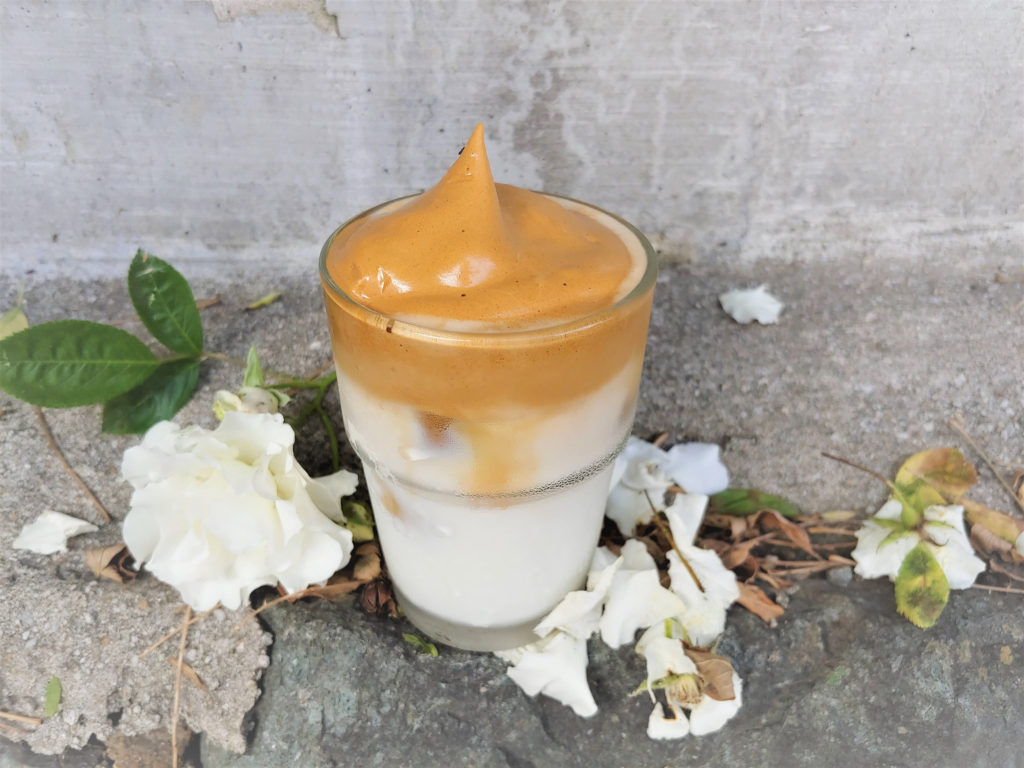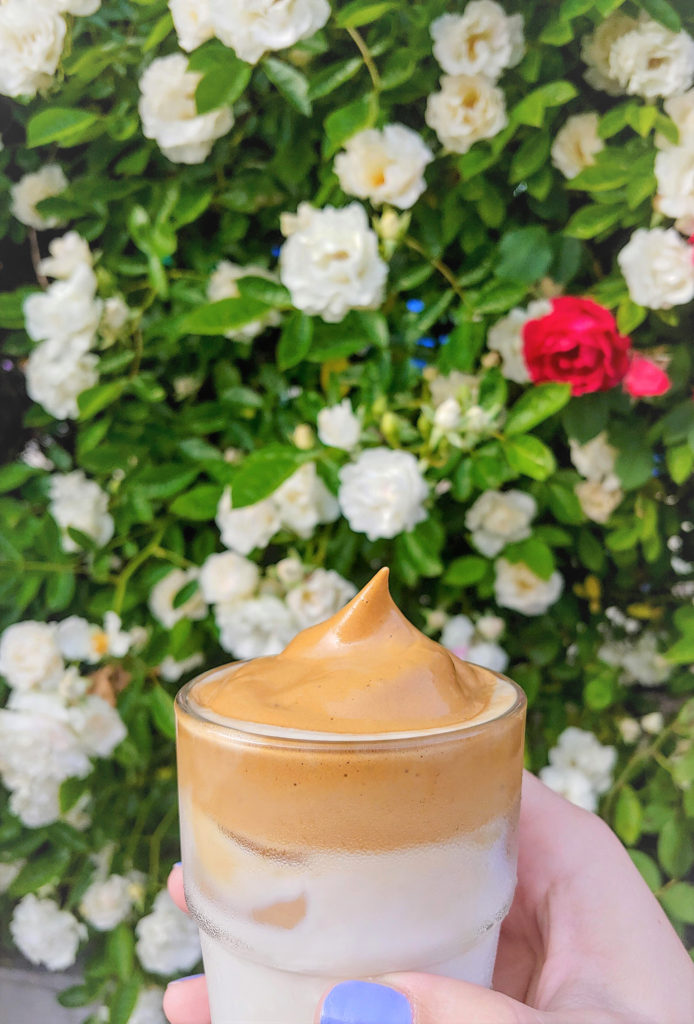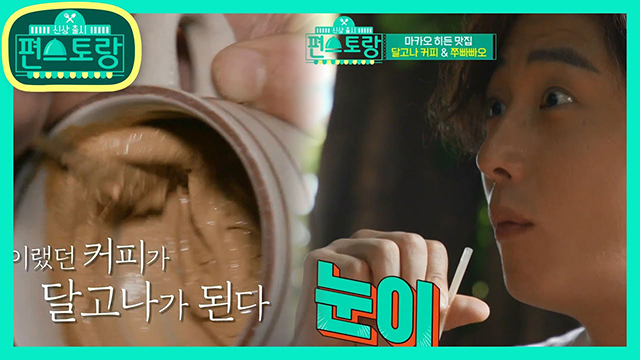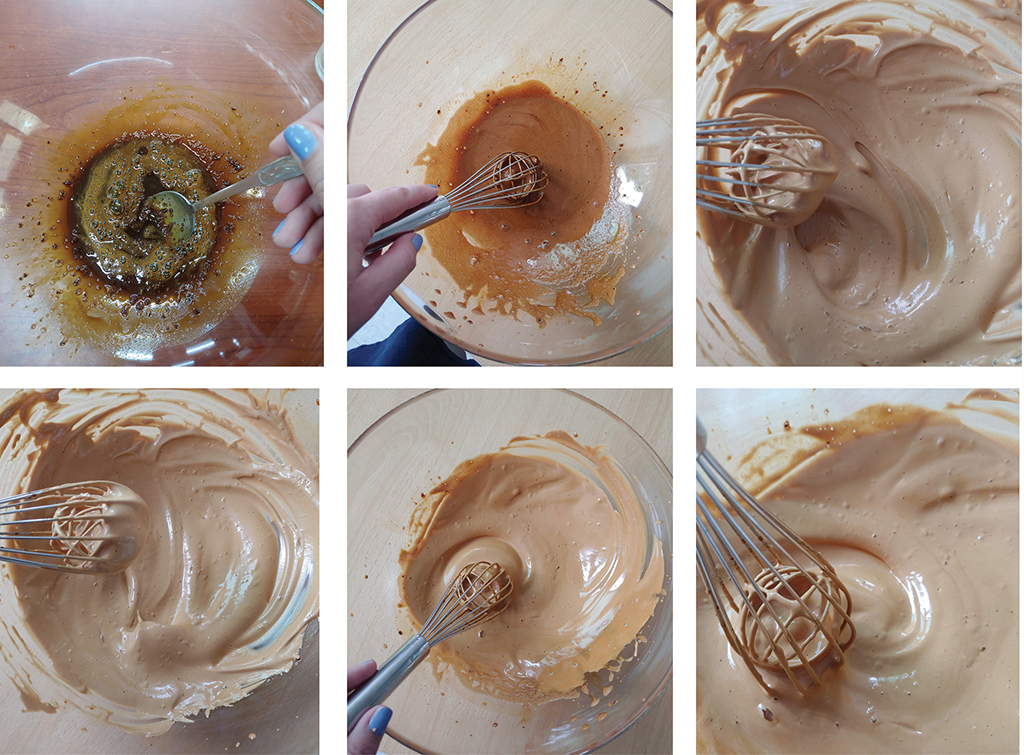Dalgona Coffee
Today’s Internet Trend.
Written and photographed by Viktoryia Shylkouskaya.
Dalgona (달고나), real dalgona, is a Korean street food that is believed to have first appeared in Korea in the 1960s in Busan, the second largest city in the country. This treat is sweet and has been translated as “honeycomb toffee.” It tastes a bit like butterscotch but has a peanut brittle-like feeling. Variations of this snack exist all around the world but is known by many different names, such as “sponge candy” in New York and Pennsylvania, “cinder toffee” in Britain, “angel food candy” in Wisconsin, “sea foam” in California and Maine, and karume-yaki in Japan.*
What Is Dalgona Coffee?
Dalgona coffee is a whipped coffee beverage made with instant coffee, sugar, water, and milk. When I first heard about it, I thought it made so much sense for Koreans. Instant coffee is everywhere; it’s not great, but it’s not totally bad. It’s just super common. There are instant coffee machines at restaurants so that when you depart after a meal, you can get a little Dixie cup of instant coffee to go, and they’re in subway stations, so you can get a big gulp before the next train arrives. When I first saw the viral challenge, I assumed someone thought they’d try making instant coffee good and came up with this since they had a lot of free time on their hands.

What you need to know, however, is that what has been named “dalgona coffee” by internet fiends, is actually “beaten coffee,” which is a common Indian coffee beverage. It got the name “beaten coffee” in India because of the process of beating the instant coffee and sugar to aerate the mixture over and over again. The only difference is that often the paste-like substance is put in the glass first and then warm milk is poured over top of it. If you’ve already tried the dalgona challenge…now you want to try it again this way, don’t you?

Much like one of my language teachers taught us in school, once everyone agrees on a name for something, it is what it is. If we all decided to suddenly start calling tables “apples,” well then, tables would be apples. So, I guess “beaten coffee from India” is going to be known as “dalgona coffee from Korea” from now on because hundreds of thousands of people online have deemed it so.
Where Did the Term “Dalgona Coffee” Come From?
The current viral trend is not really dalgona coffee but was given the moniker after a famous actor mentioned the similar taste. The craze sweeping Tik Tok and Instagram began when Jung Il Woo (정일우), a Korean actor you might recognize from Unstoppable High Kick, 49 Days, Cool Guys, Hot Ramen, Cinderella with Four Knights, and Moon Embracing the Sun, went to Macau and tried a whipped coffee based on the Indian drink called “Phenti Hui” or “Indian cappuchino.” After having the beverage, he came back to Korea, went on the show Stars’ Top Recipe at Fun-Staurant in January 2020 and talked about this whipped coffee drink he had and how it reminded him of dalgona, a common street food in Korea. Thus, the name was born and the rest is history. So, now there are two dalgona coffees, this viral challenge sweeping the internet under the hashtag #DalgonaCoffeeChallenge that is really based off of the coffee drink from India mentioned above and an actual dalgona coffee that has existed for some time and was created by a cafe in Seongsu-dong, the Brooklyn of Seoul.

Ingredients (Serves 1–2)
2 tablespoons instant coffee (Do not use ground coffee beans.)
2 tablespoons sugar (I used brown sugar.)
2 tablespoons hot water
milk
Preparation
Put the instant coffee, sugar, and hot water in a bowl. (The bigger the bowl, the more air will whip in, and the fluffier it will be.)
Mix vigorously. (I used a hand whisk for 5 minutes.)
Once the mixture is whipped, grab a glass and fill it half full (or more) with milk. (This is strong, I have to say, so if you’re not good with strong coffee, add more milk.)
Take the whipped coffee mixture and put it on top of the milk and, voila, it’s done.
Drink it up!

Prep and cooking time: 5–10 minutes. Difficulty: Easy.
*An article about dalgona can be found in the December 2017 issue of the Gwangju News:
“Dalgona: An Entertaining, Wintery Snack from the Past.”
The Author
Viktoryia Shylkouskaya is a 26-year-old Belarusian, currently residing in Gwangju. She moved to South Korea in 2016 without any knowledge of the country or language. What she thought would only be one year has since turned into many more. Instagram: @shylk.vick




